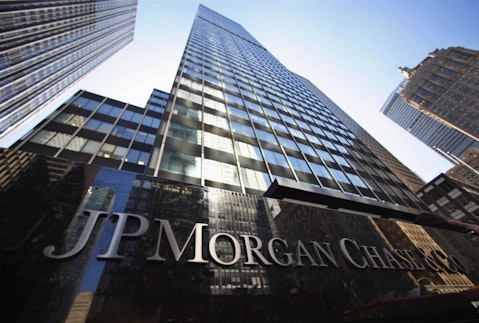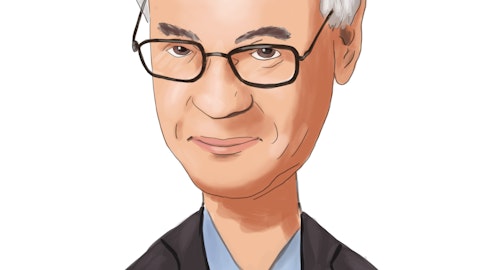Below you can see our list of the top 5 bank stocks to buy today. For our discussion about why this may be the right time to get into the banking stocks as well as a more comprehensive list, please see 10 best bank stocks to buy now.
5. U.S. Bancorp (NYSE:USB): $44.21
Number of Hedge Funds: 48 (2020 Q2)
Number of Hedge Funds: 48 (2020 Q3)
Total Dollar Amount of Long Hedge Fund Positions:$6.3 billion
Percent of Hedge Funds with Long Positions: 5.9%
2020 Return (through November 27th): –22.8%
Popularity Ranking (2020 Q2): 211
Noteworthy Hedge Fund Shareholders: Warren Buffett, Daniel Sundheim

Copyright: agcreativelab / 123RF Stock Photo
4. Bank of America Corporation (NYSE:BAC): $28.99
Number of Hedge Funds: 91 (2020 Q2)
Number of Hedge Funds: 88 (2020 Q3)
Total Dollar Amount of Long Hedge Fund Positions:$26.6 billion
Percent of Hedge Funds with Long Positions: 10.8%
2020 Return (through November 27th): –16%
Popularity Ranking (2020 Q2): 29
Popularity Ranking (2020 Q1): 23
Noteworthy Hedge Fund Shareholders: Warren Buffett, Richard S. Pzena

Pixabay/Public Domain
3. Wells Fargo (NYSE:WFC): $28.46
Number of Hedge Funds: 86 (2020 Q2)
Number of Hedge Funds: 90 (2020 Q3)
Total Dollar Amount of Long Hedge Fund Positions:$8.5 billion
Percent of Hedge Funds with Long Positions: 11.0%
2020 Return (through November 27th): –45%
Popularity Ranking (2020 Q2): 33
Popularity Ranking (2020 Q1): 42
Noteworthy Hedge Fund Shareholders: Warren Buffett
Oakmark’s Bill Nygren said the following about WFC recently:
“One of our many financial holdings, Wells Fargo, has a market cap just under $100 billion, less than three-quarters of Zoom’s cap. But Wells is one of the big three retail banks in the U.S. along with Bank of America (also a current portfolio holding) and JPMorgan. The demand for retail banking has been relatively predictable and has grown with GDP. Ten years ago, the same three banks were the largest. Due to economies of scale, their market share has grown over the past decade. It doesn’t take much imagination to assume that 10 years from now, the banking industry will be larger than it is today and that these three competitively advantaged banks should have more market share. Banks have historically earned a low-to-mid teens return on their tangible equity, and we expect that to continue. The relatively narrow range of outcomes for any of the large banks stands in stark contrast to the very wide range for a small business like Zoom.
With many of the banks, including Wells and Bank of America, priced at single digit P/E ratios, we believe reversion to the mean is on our side. Financial stocks, including banks, have typically sold at about two-thirds of the S&P 500 multiple. They are currently trading at seven to eight times pre-Covid-19 earnings. And if they have accurately estimated their Covid-19-related charge-offs, they should quickly return to those earnings. We believe they deserve P/E ratios at least 50% higher than their trailing P/E ratios, which would be consistent with their long-term average. And when (or if) interest rates eventually rise, they are expected to produce a further increase in earnings. Compared to the small businesses that are now large-cap stocks, we believe the banks are both less risky and have larger expected returns.”

2. Citigroup Inc. (NASDAQ:C): $56.67
Number of Hedge Funds: 96 (2020 Q2)
Number of Hedge Funds: 91 (2020 Q3)
Total Dollar Amount of Long Hedge Fund Positions:$5.6 billion
Percent of Hedge Funds with Long Positions: 11.1%
2020 Return (through November 27th): –26.2%
Popularity Ranking (2020 Q2): 23
Popularity Ranking (2020 Q1): 31
Noteworthy Hedge Fund Shareholders: ValueAct, Boykin Curry
A value fund manager recently said the following about Citigroup in his investor letter:
“Citigroup’s operations span more than 160 countries. Faced with record low interest rates, rising loss provisions, and subdued lending, the financial sector has been one of the worst performing groups year-to-date. However, earnings appear to have stabilized for the major banks. The company had its own internal issues too, having to pay significant fines for regulatory deficiencies. They are spending over $1 billion on compliance matters. With these issues being addressed and the company’s dominant network intact, it is well positioned to benefit from a global economic recovery. We have assumed a gradual recovery of earnings to former highs over the next few years. Return on tangible common equity should exceed 10% by 22, implying earnings per share above $8. While shares have risen recently, they still trade at only 6x our 2-year-out earnings estimate and yield just under 4%.”

Kiev.Victor / Shutterstock.com
1. JP Morgan Chase & Co (NYSE:JPM): $121.22
Number of Hedge Funds: 123 (2020 Q2)
Number of Hedge Funds: 118 (2020 Q3)
Total Dollar Amount of Long Hedge Fund Positions:$6.1 billion
Percent of Hedge Funds with Long Positions: 14.4%
2020 Return (through November 27th): 23.6%
Popularity Ranking (2020 Q2): 12
Popularity Ranking (2020 Q1): 15
Noteworthy Hedge Fund Shareholders: Daniel Sundheim, Andreas Halvorsen
Please also see Top 10 Stocks Warren Buffett Just Bought and 30 Most Popular Stocks Among Hedge Funds

Disclosure: None.





